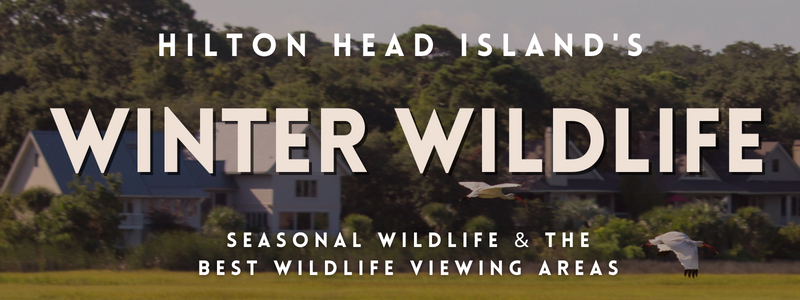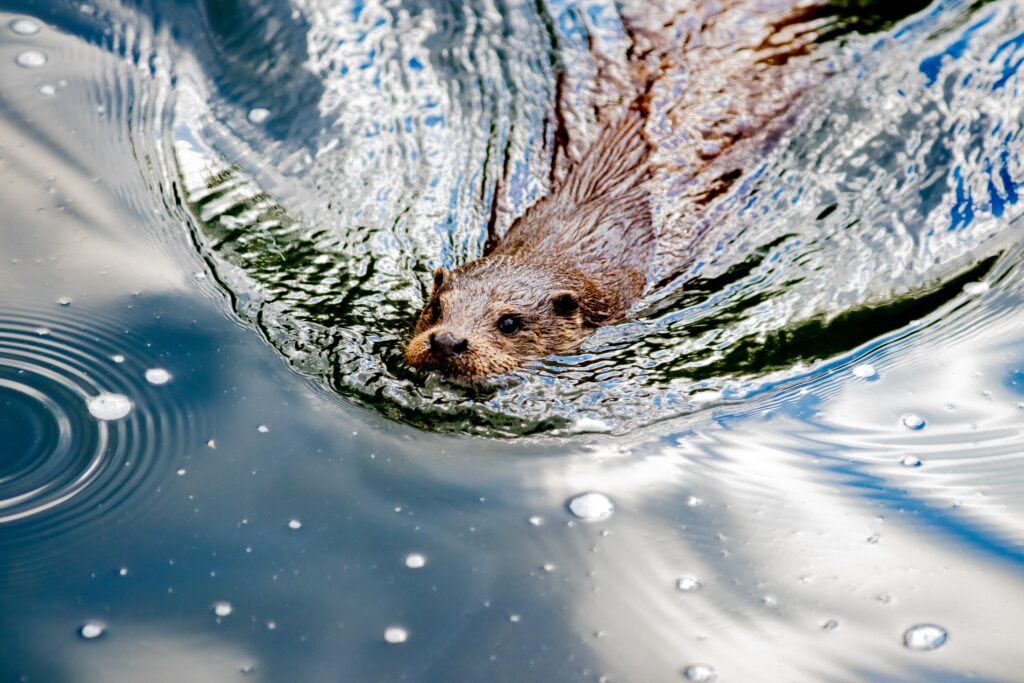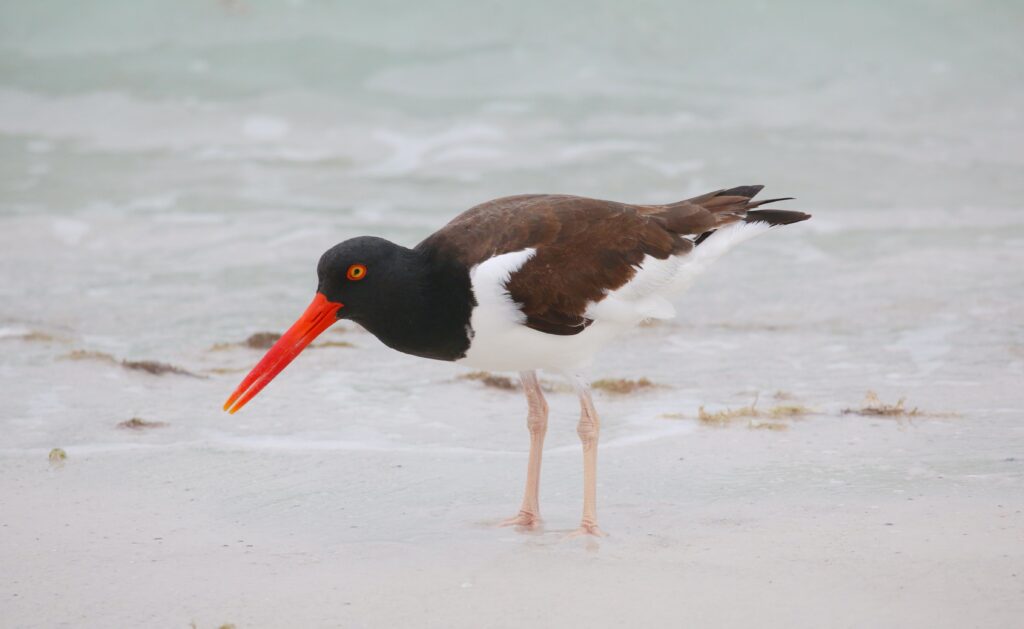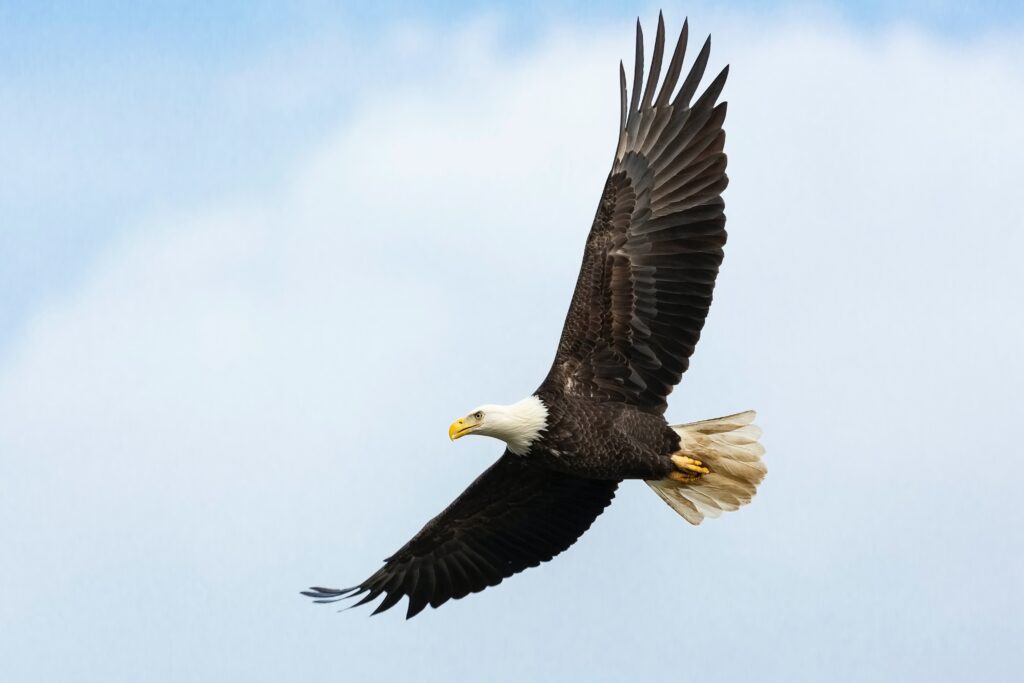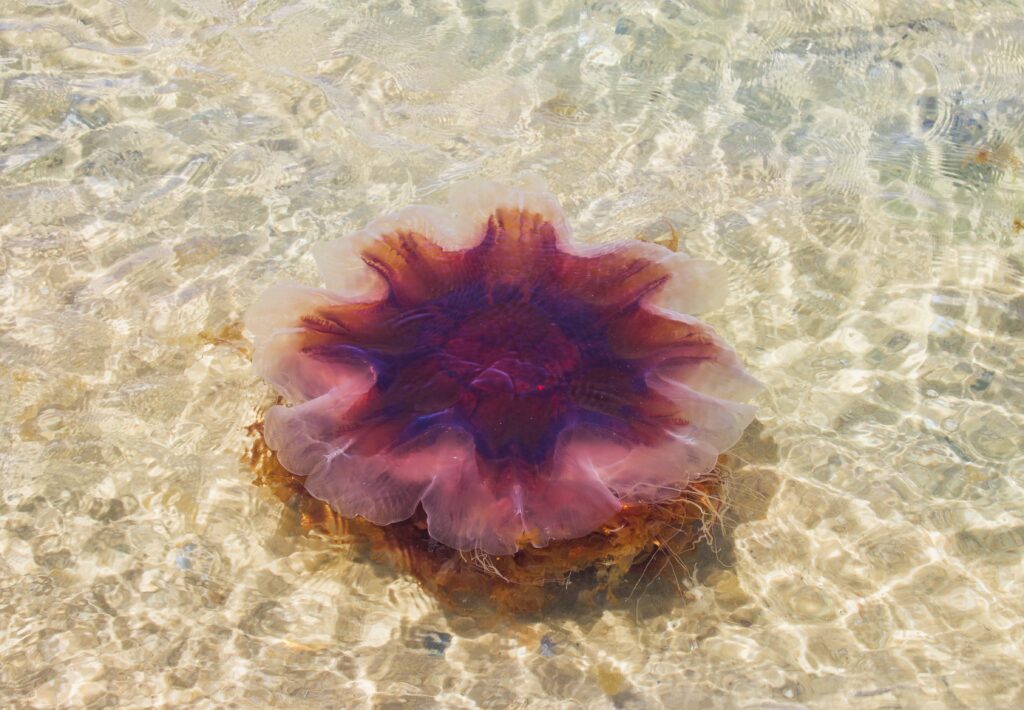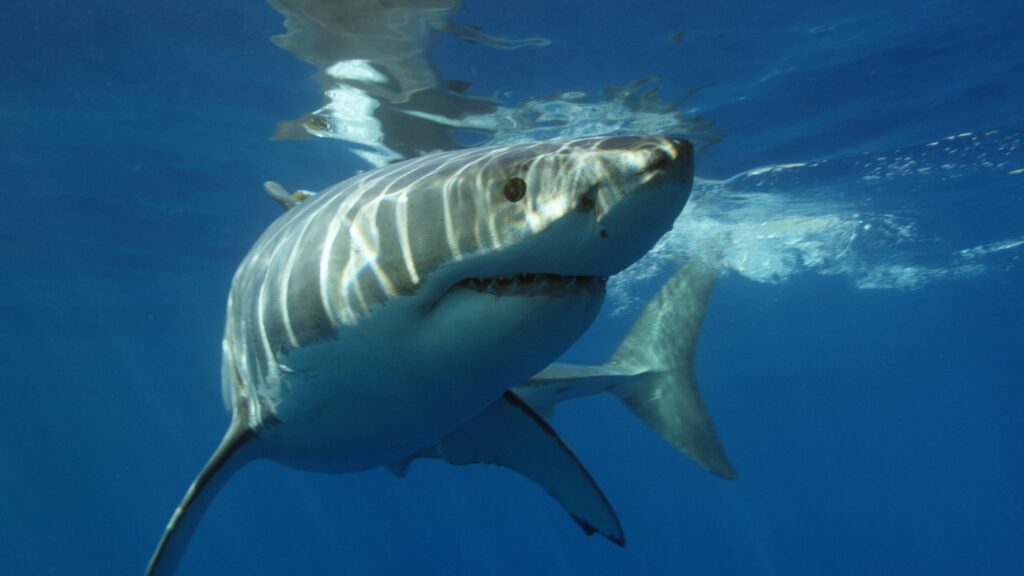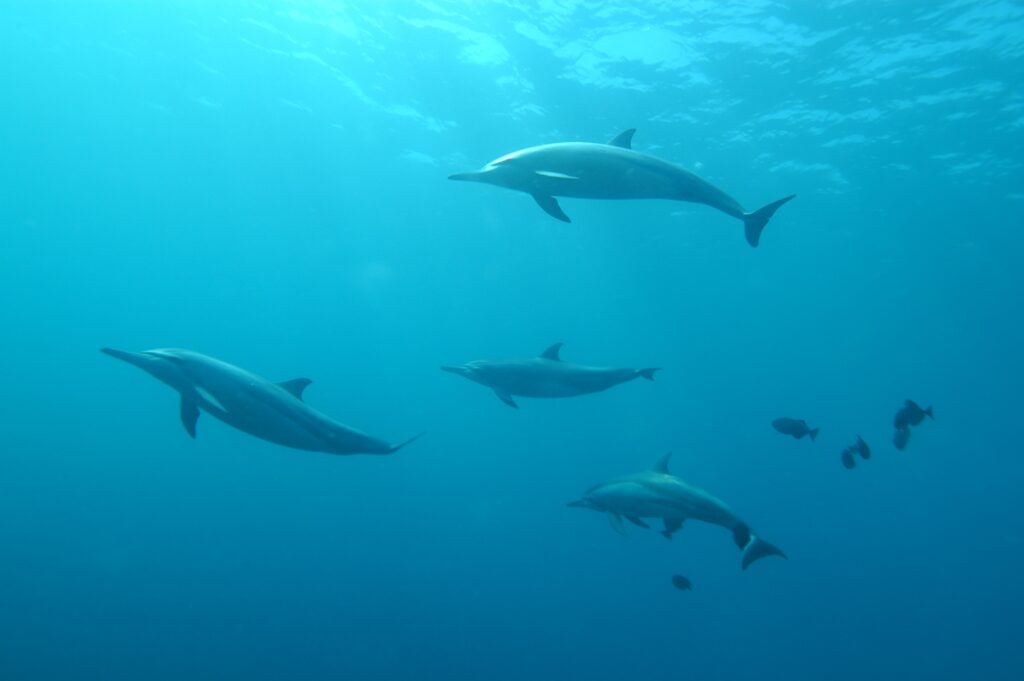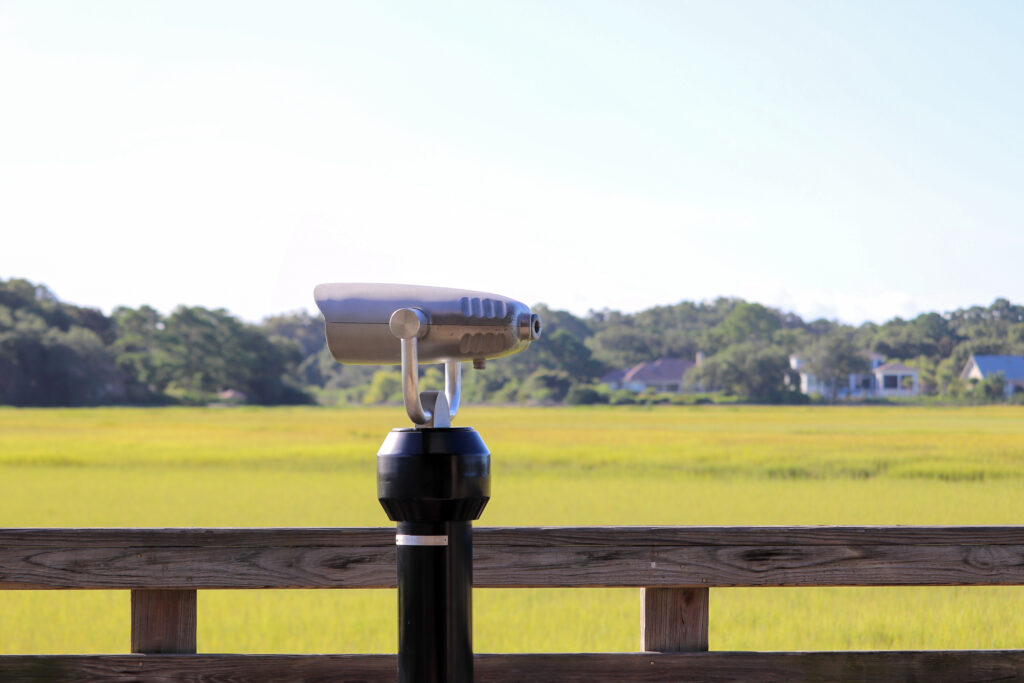When it’s time to throw on a light sweater for your day of exploring Hilton Head, that can be a sign that the best time to view the island’s winter wildlife is just around the corner. Due to less visitors and human activity in general, as well as the migratory patterns of certain animals, those who visit Hilton Head during the winter months are in for a treat.
We’ve included a list of only some of the seasonal animals that get the most buzz during the winter season. Keep reading to learn more about some of the best locations on and around the island to spot winter wildlife!
North American River Otter
Although sightings of these year-round residents are scarce, you’ll have a better chance of spotting a family group of otters in the winter months. These aquatic mammals become more active during daylight hours in addition to their usual nightly activity. River otter breeding season runs from late winter to early spring, and typically prefer slow-moving waters like salt marshes and estuaries. Make sure to keep an eye out for these playful animals.
American Oystercatcher
These eye-catching birds are easy to identify, as they have a bright orange beak and yellow eyes. American oystercatchers flock to southern states during the winter months, with the largest number being found in South Carolina’s barrier islands and oyster beds—especially in the Port Royal Sound. As you might’ve guessed, these birds do in fact eat oysters, having mollusks make up their general diet. Once named the “sea pie,” they were renamed the American oystercatcher after they were found breaking open oyster shells. They remain the only type of bird able to do so without letting gravity do the work for them. You’ll be able to spot them easily during low tide.
Piping Plover
Another type of bird that likes to spend their winters on the sandy beaches of South Carolina, the piping plover can be seen running across the beach as it forages for food. With a diet mainly consisting of marine worms, snails, and small crustaceans, piping plovers aren’t really interested in exploring anywhere but the beach. Their coloring makes it easy to blend in with the sand, so when they’re not scurrying around during low tide, it’s pretty hard to spot them. piping plovers are unfortunately endangered, and the birds that visit do South Carolina’s shores, typically spend breeding season in the Great Lakes.
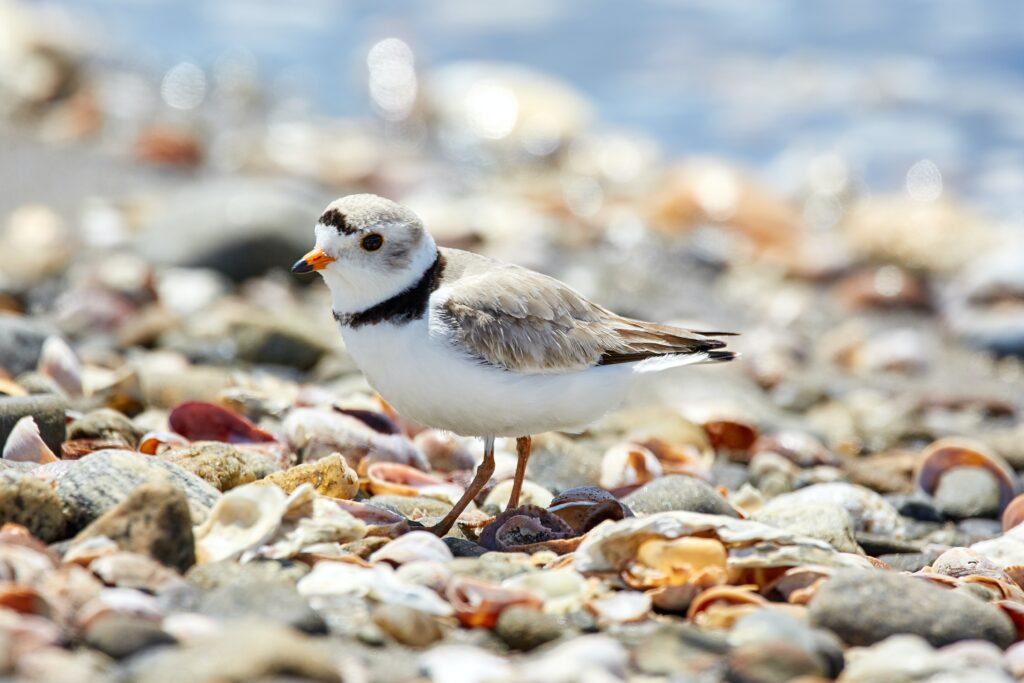
Bald Eagle
There are many types of migratory birds that spend their winters on Hilton Head Island, but the bald eagle is arguably the most exciting type to spot. These mighty birds nest in South Carolina, returning to our shores at the end of August and begin restoring their nests starting in late fall. Bald eagles can be spotted across the United States, and typically stay close to water as their main diet mostly consists of fish—live or carrion. Spotting a bald eagle is a pretty neat experience, but it’s something you don’t normally see every day. At the very least, you can always view the live camera of a nest that’s sponsored by the Hilton Head Island Land Trust.
Lion’s Mane Jellyfish
Although jellyfish season on Hilton Head Island is normally in the summer months, the lion’s mane jellyfish is known to appear during the winter season. Also known as the winter jelly, these jellyfish aren’t typically a problem, since they prefer cooler water and beachgoers do not. If you happen to spot one in the sand on your walk down the waterline, it’s advised that you just leave it be. Although the jellyfish itself isn’t very dangerous to humans, there’s always a risk of an allergic reaction. Still, these jellies are pretty neat and although they vary greatly in size, they’re technically the largest jellyfish species in the world.
Great White Sharks
Before anyone freaks out, the chances of you coming into contact with a great white shark—let alone even seeing one—are very slim. We’ve only included these powerful creatures to this list because they are known to head south on their very wide migratory loop. Great whites are found worldwide, but due to efforts of research groups, scientists and anyone with internet access can now track some of the tagged sharks as they roam. From the data collected, migratory patterns have been pieced together, and the sharks that pass by South Carolina’s coast have more than likely spent their summers in the Northeast where they’ve foraged and bulked up just in time for their winter retreat. These interesting creatures help our ocean stay healthy, so if you’re at all interested in seeing if there’s a shark or two near Hilton Head’s coast, look up a website or download a free app that produces tracking information.
What About Dolphins?
Great news! Hilton Head Island has a substantial population of bottlenose dolphins that stick around throughout the year. Due to the temperate water surrounding the island, these playful creatures can be found in open water, bays, lagoons, and estuaries. If you see one, chances are there are a few more not too far away because they like to travel in groups. Migratory patterns of dolphins somewhat reflects where their food source is headed, so when and where you see dolphins on the island(regardless of the time of year) is most likely associated with which way not only the tide is going, but where the fish, squid, and other crustaceans are headed as well.
Will I See Gators?
The definite answer? We don’t have one. Whether you see a gator or not during the winter months on Hilton Head is entirely dependent on the weather. And if there’s one thing about winters on the island, they are pretty balmy compared to many other destinations you may be traveling from. So, the short answer is: maybe.
Alligators go through something called brumation when the temperature drops. Not as severe as hibernation, cold-blooded animals fall into a state of inactivity to conserve energy. That means, when the sun’s out and the temperature rises to a certain degree, you’ll see them lounging on the banks of ponds once again. As always, keep your distance from alligators and ponds that seem alligator free (because they probably really aren’t).
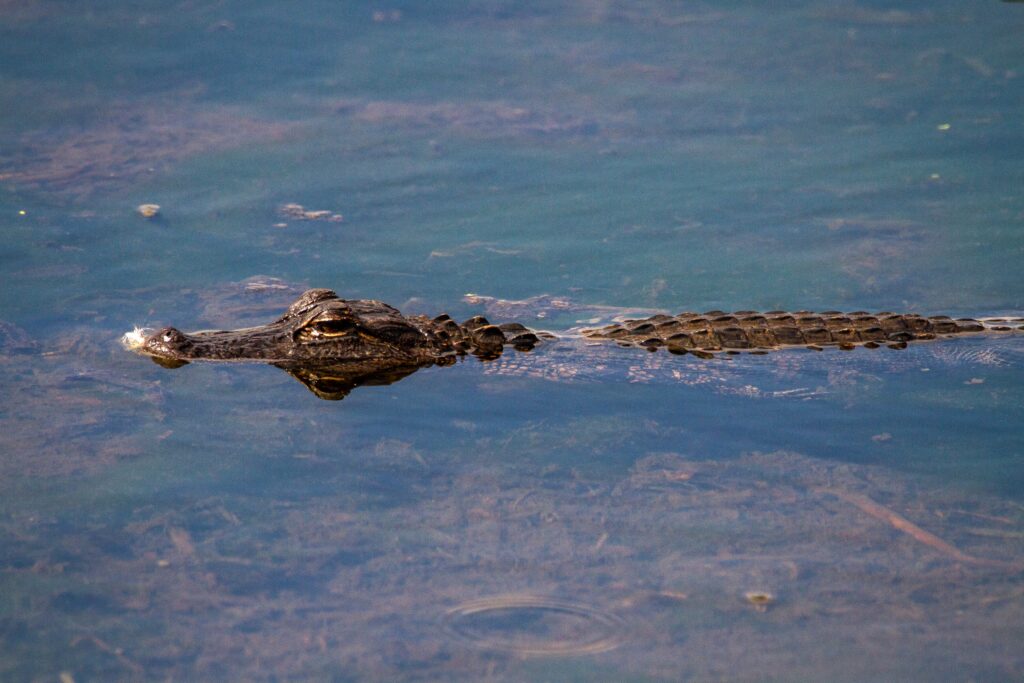
Best Places to Observe Winter Wildlife
You’ll be able to find most of the types of animals listed while you’re on one of Hilton Head’s many pristine beaches. There are, however, many more year-round and seasonal animals residing in the island’s interior as well. Here’s a few of the best places to spot wildlife on the island:
Audubon Newhall Preserve
55 Palmetto Bay Rd.,
Hilton Head Island, SC 29928
Sunrise to Sunset
This 50-acre nature preserve is located on the south end of the island, and offers interconnected trails through the beautiful native forest ecosystem. Owned and operated by the Hilton Head Island Audubon Society, free guided tours are available on Tuesday mornings.
Sea Pines Forest Preserve
Located within the Sea Pines Property
Directions Here | Gate Fee Required
Sunrise to Sunset
Visitors of Hilton Head can discover this vast, 605-acre protected habitat that includes trails, bridle paths, boardwalks, and fishing docks. The Sea Pines Resort offers horseback rides and guided tours by boat or by wagon. Don’t miss the 4,000-year-old Shell Ring while visiting.
The Boardwalk at Mitchelville
40 Harriet Tubman Way
Hilton Head Island, SC 29926
6:00am-9:00pm
Better known as the site of the first self-governed Freedmen’s Town in the United States, the Historic Mitchelville Freedom Park allows visitors to take guided and self-guided tours throughout the property. Set in an already beautiful natural landscape, the boardwalk out to the viewing platform over the marsh is an excellent place for viewing wildlife.
Pinckney Island National Wildlife Refuge
Located between Bluffton and Hilton Head
Sunrise to Sunset
Located just off of Hilton Head Island, this 4,053-acre National Wildlife Refuge attracts migratory birds and is home to many local species year-round. Easily accessible, visitors can enjoy hiking, biking, and saltwater fishing only in the surrounding waters. The refuge is made up of salt marsh, tidal creeks, forestland, freshwater ponds, and brushland.
